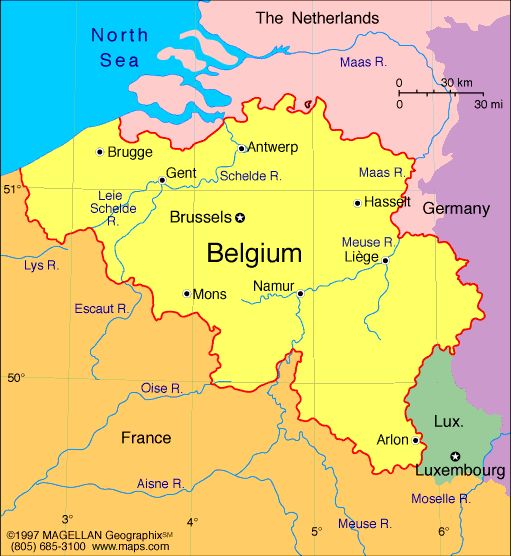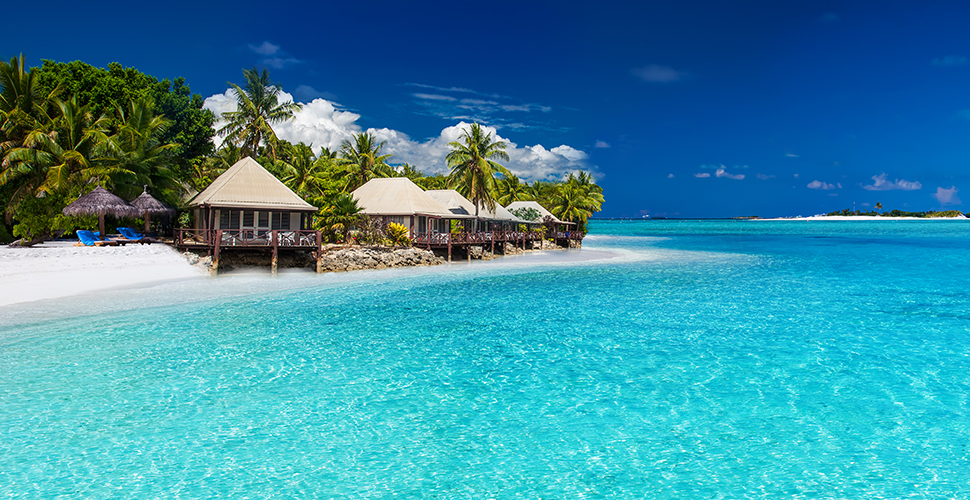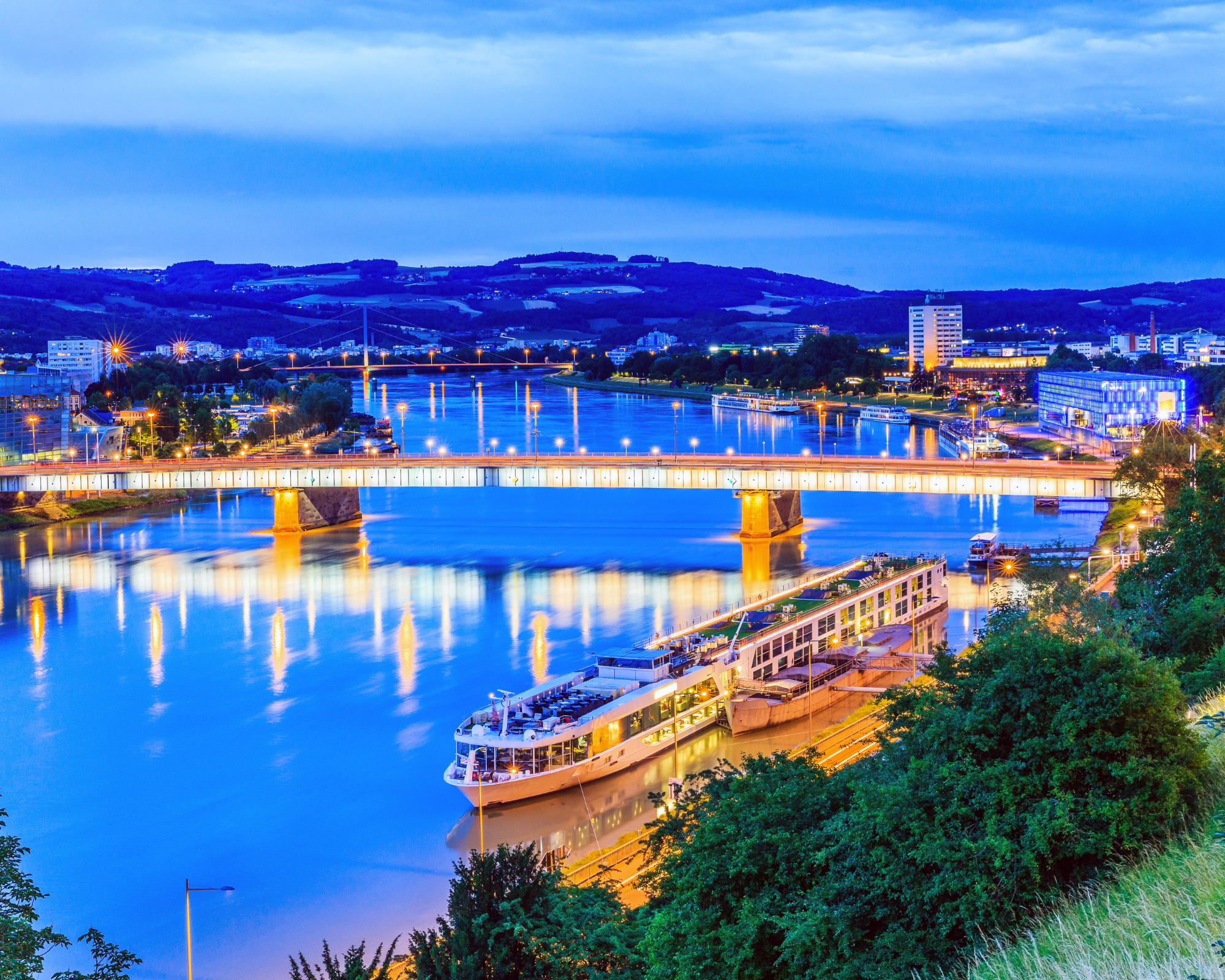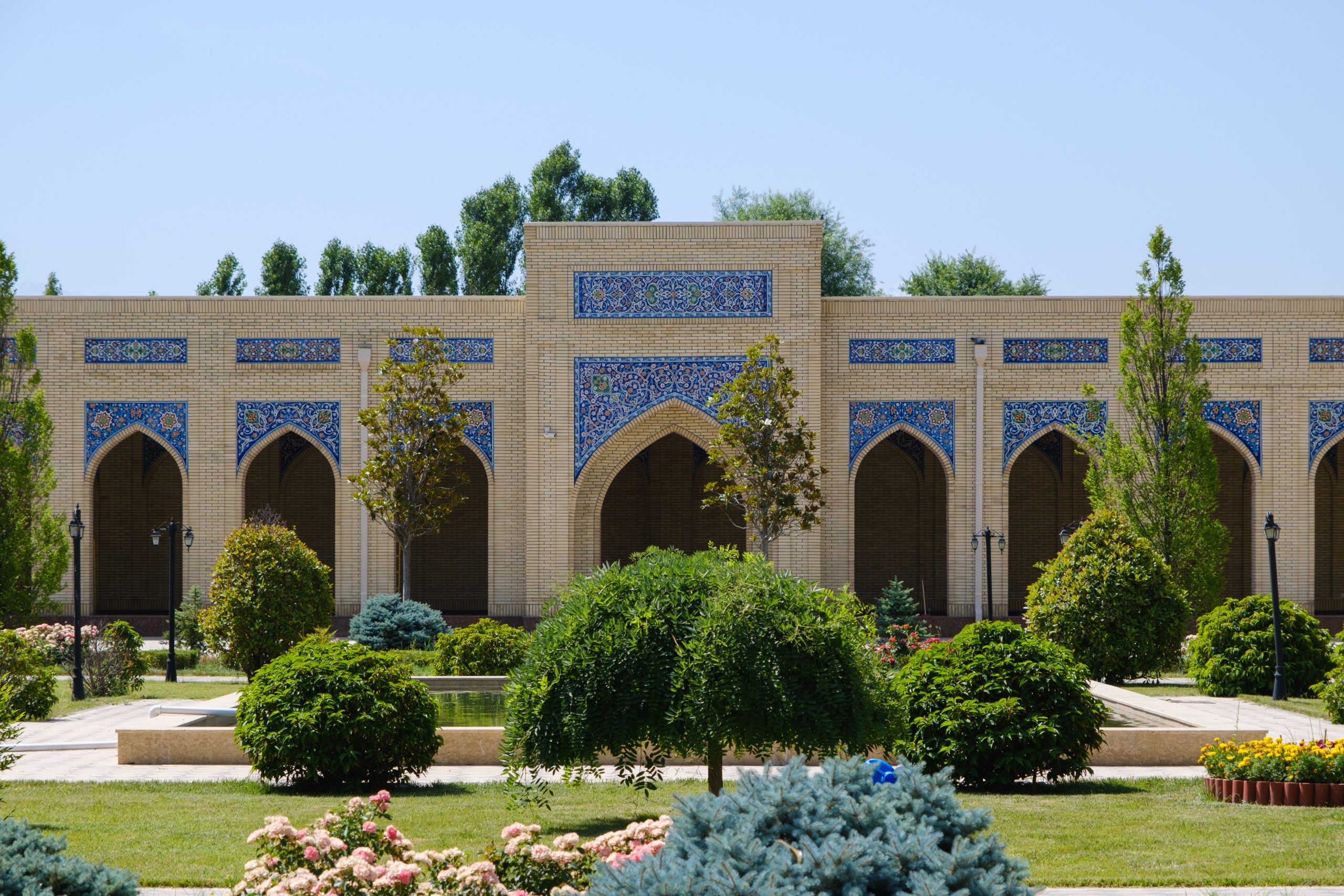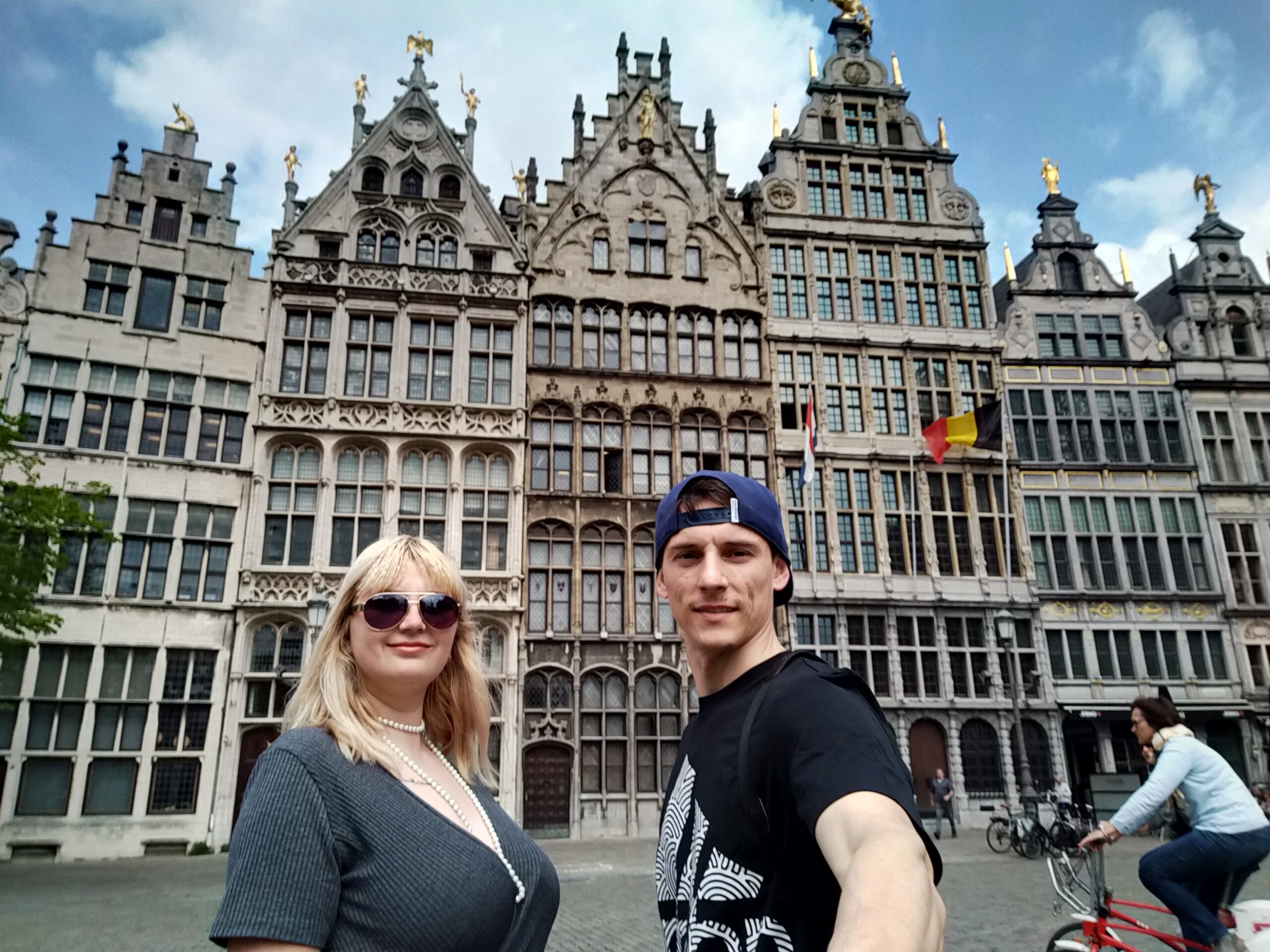
Exploring the city of Antwerp and Bruges (Belgium) in 2024
Exploring the city of Antwerp and Bruges (Belgium) in 2024
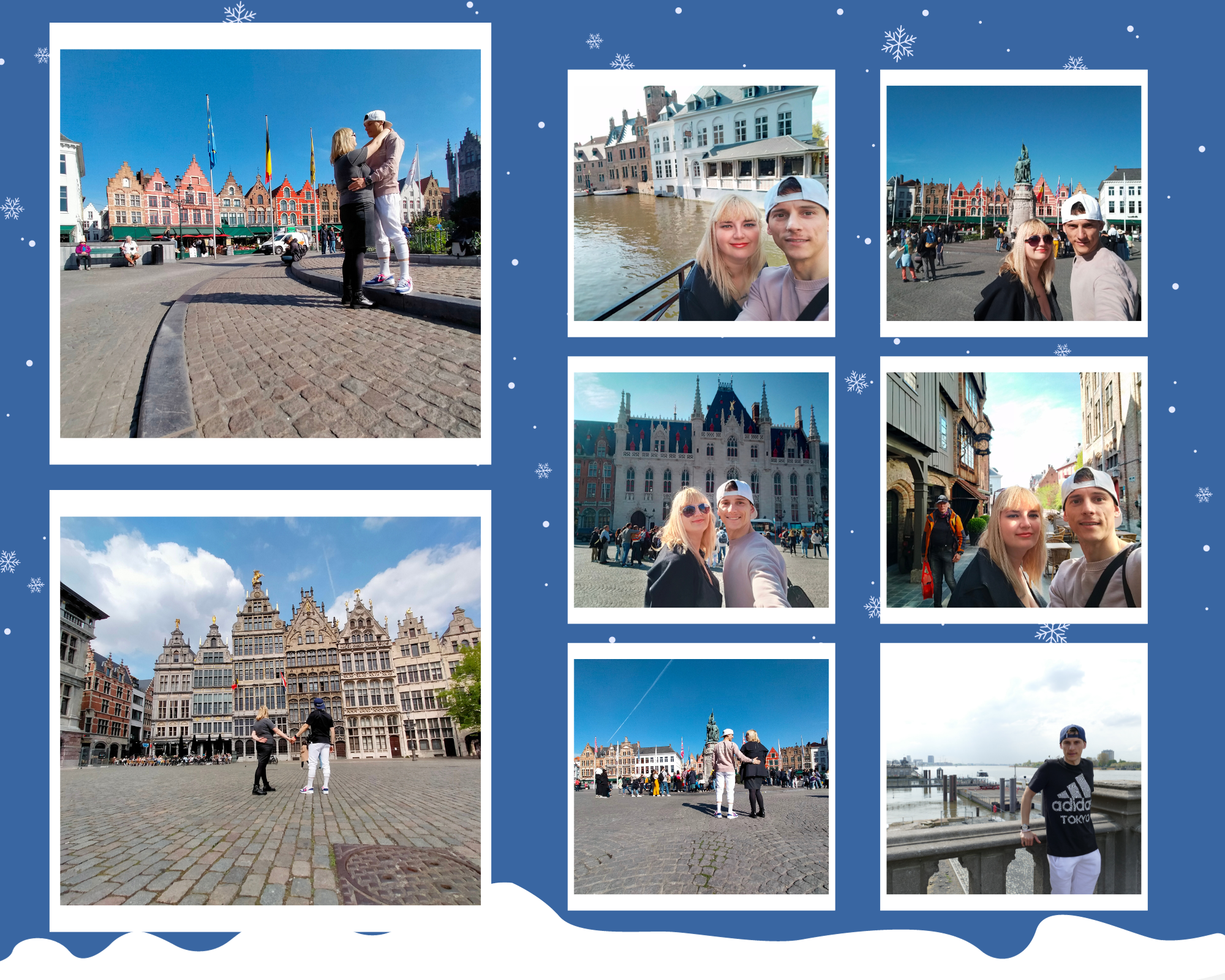
Source : Traveldreamdiary.com
Informations
Belgium’s Flanders region is home to the city of Antwerp, often known as Antwerpen, which also serves as the provincial capital. With over 520,000 residents as of January 2017, the city was ranked top among Belgian communes in this regard.
Temperature: The high season lasts from mid-April to mid-October. The tourist season reaches its peak in July and August.
Language: The official languages are Dutch, German and French.
Currency: Euro
Food Prices: Meal in a cheap restaurant=15 EUR, Meal for 2 People, Mid-range Restaurant=65 EUR
You can find more information about the visa here.
Notice: Several of the links below are affiliate links, which means that if you click over and make a purchase, I will get a commission at no extra cost to you. Here is a link to our complete affiliate disclosure.
Things to do
Grote Markt
The area known as the Grote Markt is situated outside of the city limits of Antwerp. A short distance from the Scheldt is Op wandelafstand (via de Suikerrui). It’s a tiny location with an abundance of gold. The middeleeuwse woonkern contained a forum of small net buildings known as the Grote Markt. In 1220 aan de stad, Hertog Hendrik I van Brabant (1165–1235) had already established his community foundation. The year 1310 marked the first recorded use of the name Merct. The first year markets of the forum were held here, and the goods were cooperatively handled. The name will be referenced in Grote Markt in the sixteenth century.
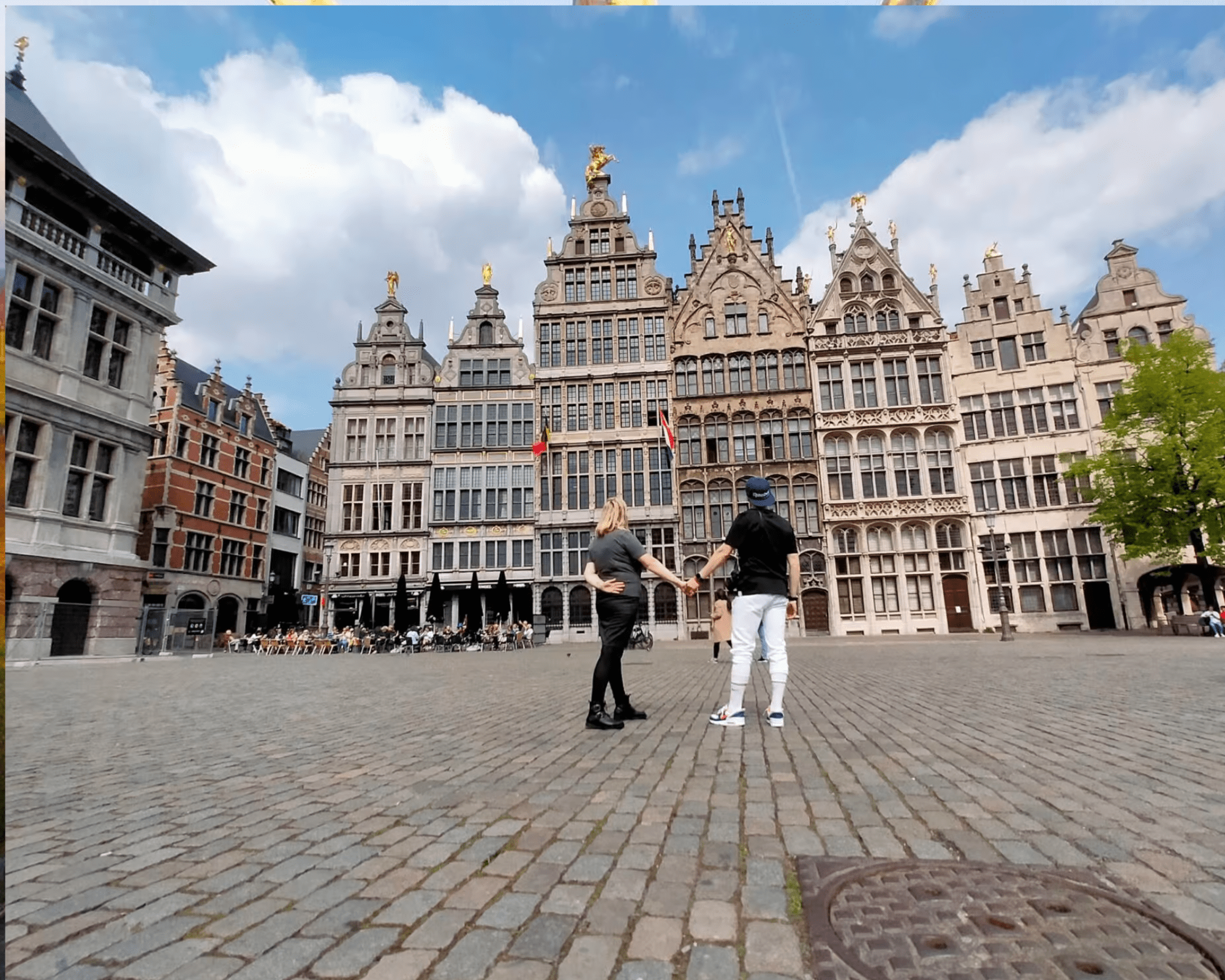
Source : Traveldreamdiary.com
MAS - Museum aan de Stroom
In the Eilandje neighborhood of Antwerp, Belgium, next to the Scheldt River, lies a museum called the Museum aan de Stroom (MAS; Dutch for: Museum by the Stream). It is the biggest museum in Antwerp, having opened in May 2011.The Hanzestedenplaats was chosen by the city council of Antwerp in 1998 as the location for the museum. The first brick of the structure was placed on September 14, 2006. Museum artifacts arrived in 2010 from a variety of other museums, including the now-defunct Maritime Museum and the Ethnographic Museum. On May 17, 2011, the museum opened to the public.
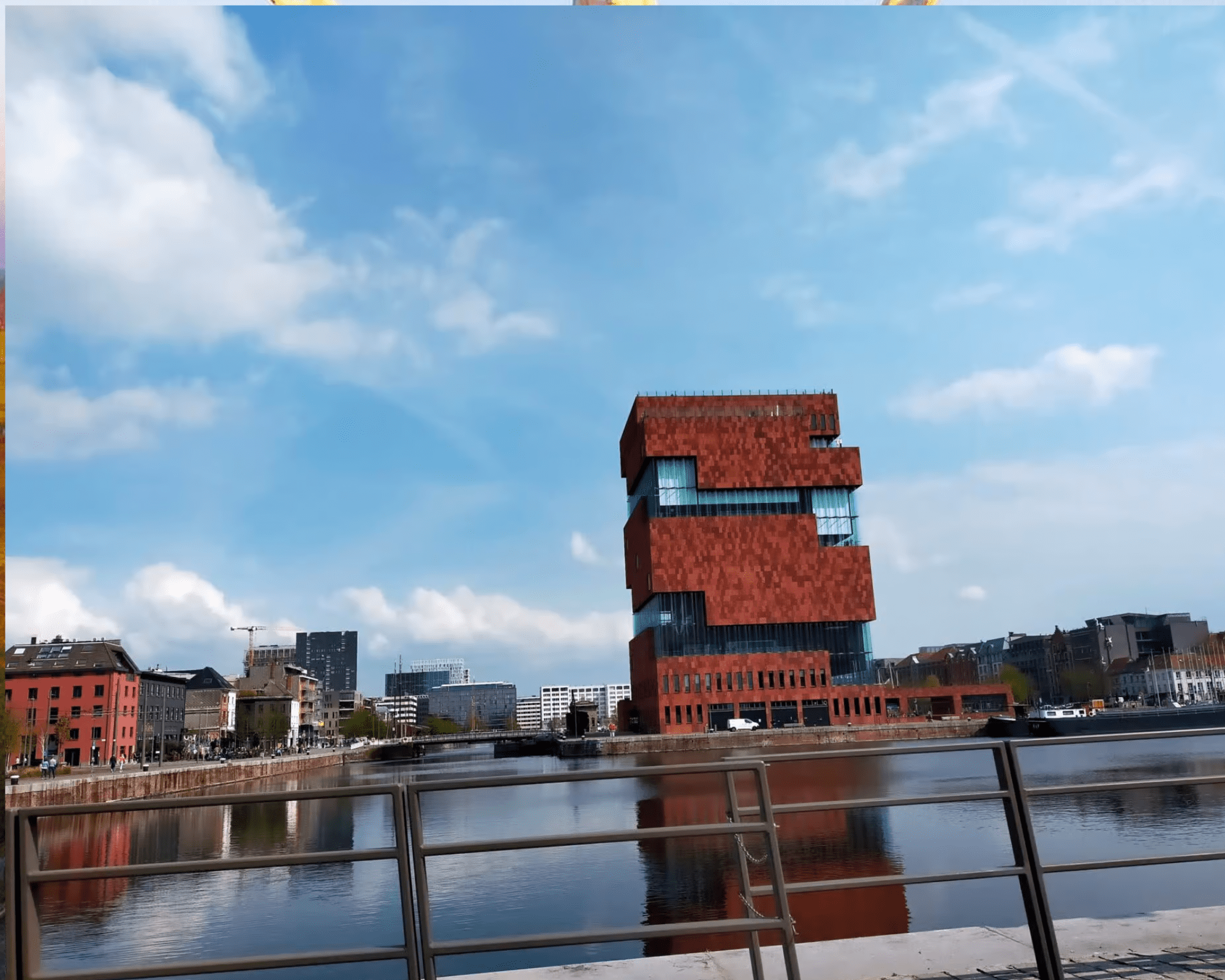
Source : Traveldreamdiary.com
Cathedral of Our Lady
Located in Antwerp, Belgium, the Cathedral of Our Lady is a Roman Catholic church known by its Dutch name, Onze-Lieve-Vrouwekathedraal. The Diocese of Antwerp’s current seat was begun in 1352 and has never been “completed,” even though the first phase of building was finished in 1521.Jan and Pieter Appelmans, two architects, built it in the Gothic style. Along with paintings by painters like Marten de Vos, Otto van Veen, and Jacob de Backer, it includes several important pieces by Baroque painter Peter Paul Rubens. The cathedral, with a tower standing 123 meters (404 feet) over the city, is the biggest Gothic church in Belgium. The cathedral’s belfry is a part of the UNESCO World Heritage Sites Belfries of Belgium and France entry.
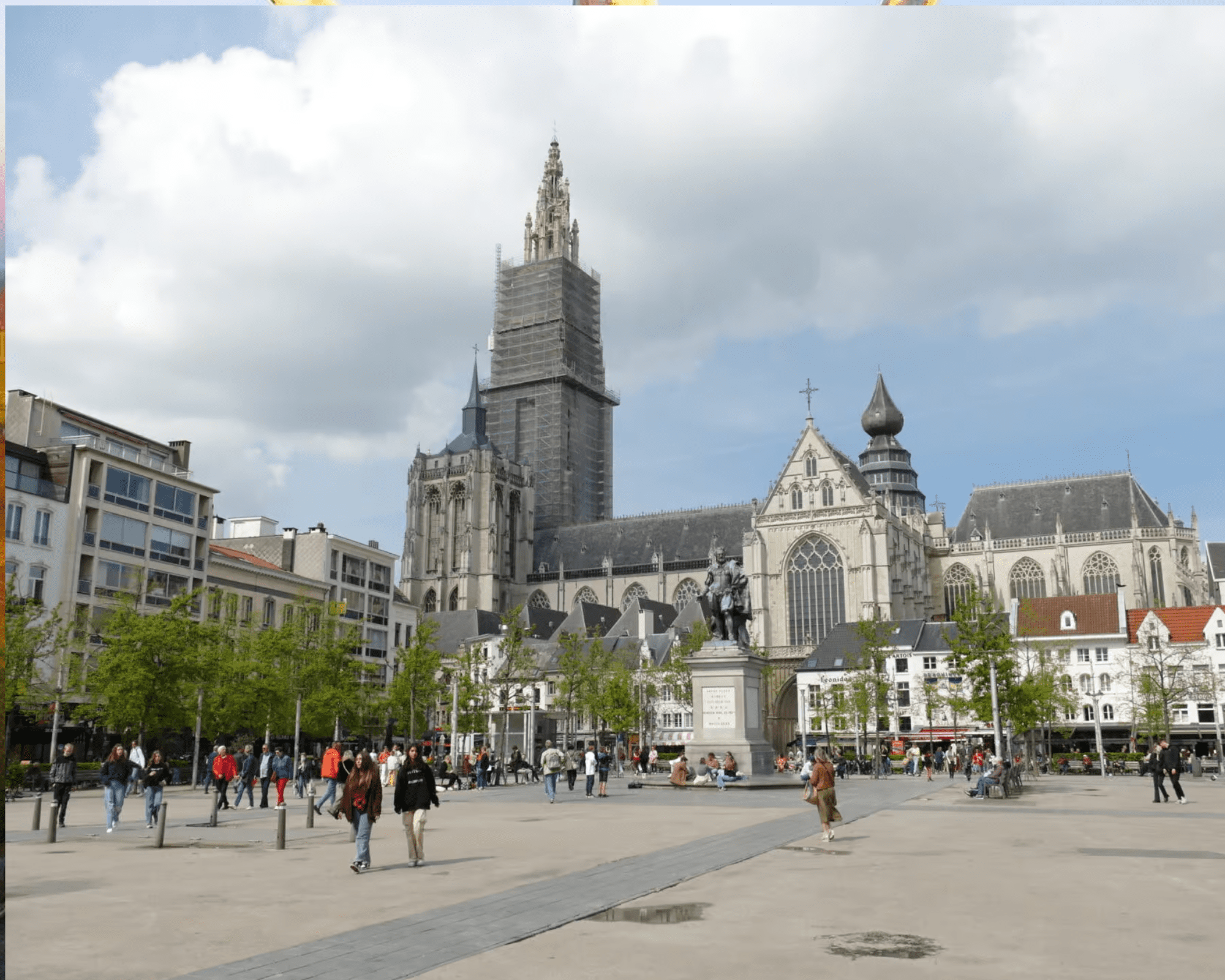
Source : Traveldreamdiary.com
Antwerp Zoo
The Antwerp Zoo, also known as ZOO Antwerpen in Dutch, is a zoo situated near to the Antwerpen-Centraal train station in the city center of Antwerp, Belgium. Founded on July 21, 1843, it is the oldest animal park in the nation and among the oldest worldwide.De Koninklijke Maatschappij voor Dierkunde van Antwerpen, formerly known as Société Royale de Zoologie d’Anvers (The Antwerp Royal Society for Zoology), has been in charge of the park from its founding. This also led to the zoo being known by the well-known moniker “De Zoologie.” The original goal was to promote the fields of botany and zoology. Renowned botanist and naturalist Jacques Kets served as its first director (10 November 1785 – 1 February 1865). His only requirement upon taking this job was that a museum be constructed to hold his natural history artifacts. H.M. King Leopold I dedicated this structure in 1844. On that occasion, the society added the predicate Royal to its name.

Source : Traveldreamdiary.com
St. Paul's Church
Situated near the Veemarkt in Antwerp, Belgium, is the Roman Catholic church known as St. Paul’s Church (Dutch: Sint-Pauluskerk). Its interior is distinguished by its elaborate Baroque decorating, while its exterior is primarily Gothic with a Baroque tower. In addition to numerous sculptures and church furnishings made by eminent Antwerp sculptors like Pieter Verbrugghen I, Jan Pieter van Baurscheit de Elder, Jan Claudius de Cock, and Andries Colyns de Nole, it houses paintings by Peter Paul Rubens, Anthony van Dyck, and Jacob Jordaens. The Calvary outside the church, which consists of nine reliefs and 63 life-size sculptures done in a popular and theatrical style, is especially noteworthy.
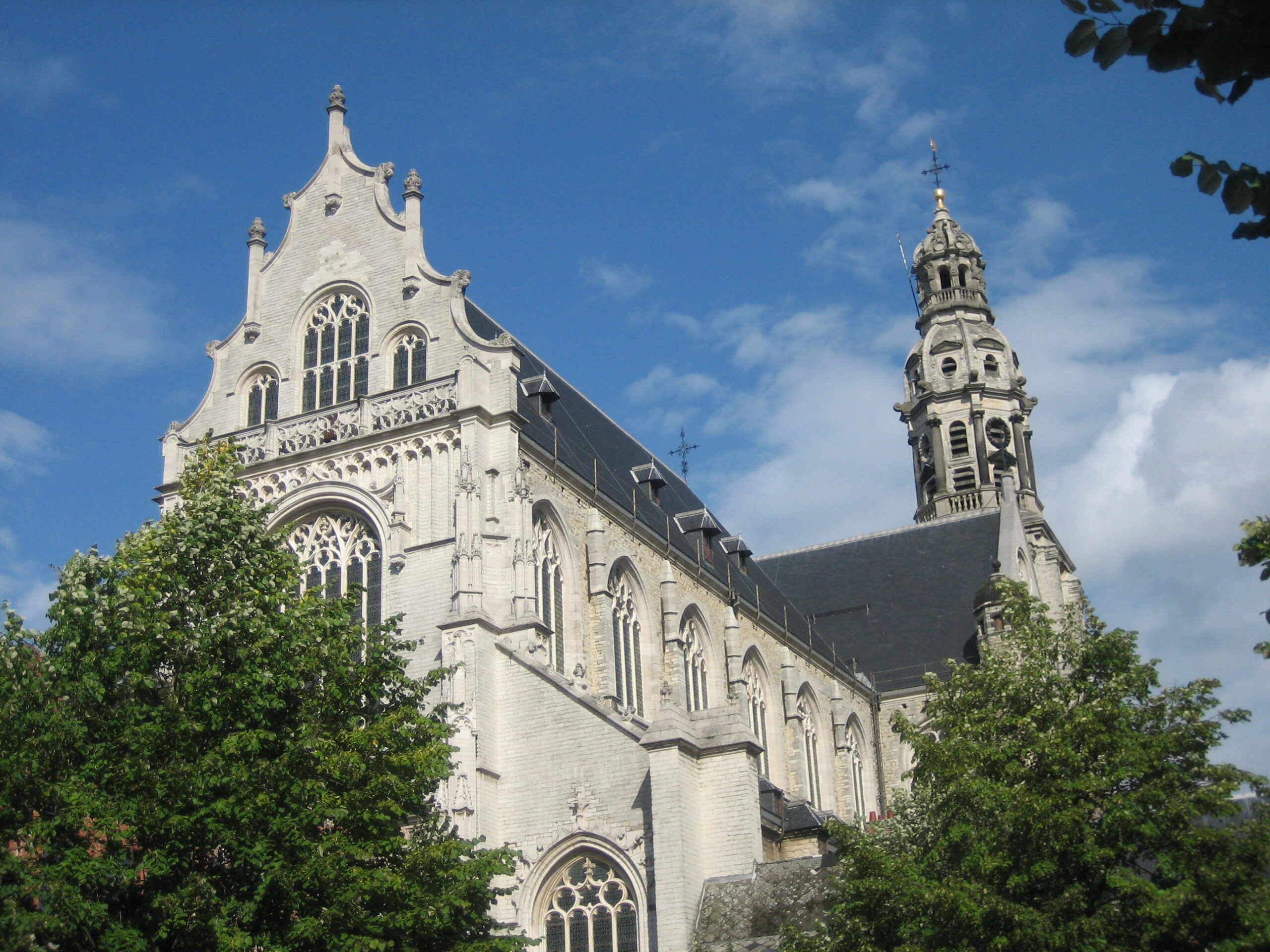
Source : Traveldreamdiary.com
The Royal Museum of Fine Arts
Established in 1810, the Koninklijk Museum voor Schone Kunsten Antwerpen, also known as KMSKA, is a museum located in Antwerp, Belgium. Its collection comprises paintings, sculptures, and sketches spanning from the fourteenth to the twentieth centuries. Since the fifteenth century, Antwerp, Belgium, and the Northern and Southern Netherlands have been home to art enthusiasts whose tastes and artistic output have been reflected in this collection.One of the main attractions of Antwerp’s Zuid neighborhood is the neoclassical structure that houses the collection. Created by architects Jean-Jacques Winders (1849–1936) and Frans Van Dijk (1853–1939), the imposing structure was started in 1884, inaugurated in 1890, and finished in 1894. The building’s sculptures include two bronze statues of the sculptor Thomas Vincotte’s Pheme, drawn by horses in chariots, and seven rondel medallions featuring the artists Boetius à Bolswert, Frans Floris, Jan van Eyck, Peter Paul Rubens, Quentin Matsys, Erasmus Quellinus II, and Appelmans, which are divided by four massive sculptures that stand for architecture, painting, sculpture, and graphics.
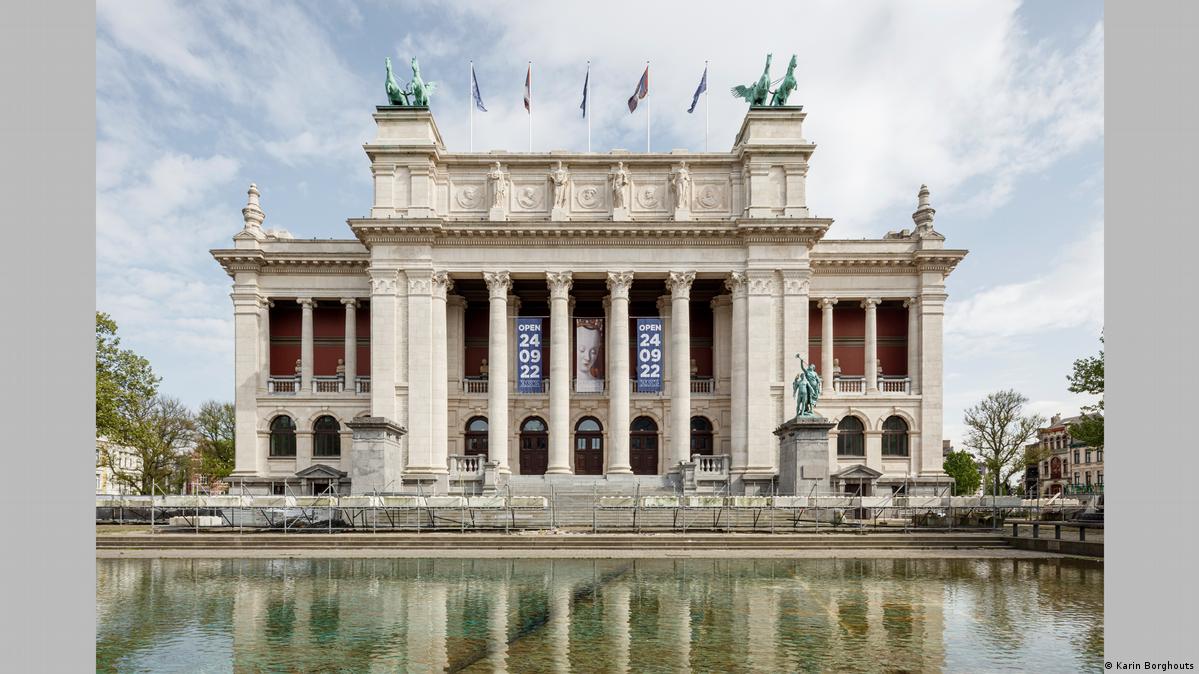
Source : Facebook
The Plantin-Moretus Museum
Focusing on the printing works of Jan Moretus and Christophe Plantin from the 16th century, the Plantin-Moretus Museum (Dutch: Plantin-Moretusmuseum) is located in Antwerp, Belgium. Situated at the Vrijdagmarkt (Friday Market) in Antwerp, it holds the distinction of being a UNESCO World Heritage Site since 2005. It was formerly their home and printing establishment, the Plantin Press.Christophe Plantin established the printing business in the sixteenth century by obtaining type from the preeminent Parisian typefounders of the time.One of the most intricate creations of the era was Plantin’s eight-volume, multilingual Plantin Polyglot Bible, which featured writings in Hebrew, Aramaic, Greek, and Syriac. Plantin was a prominent humanist figure in current printing.It is currently believed that Plantin was at least associated with members of the Familists, a heretical sect, and that this may have contributed to his exile in his home country of France.
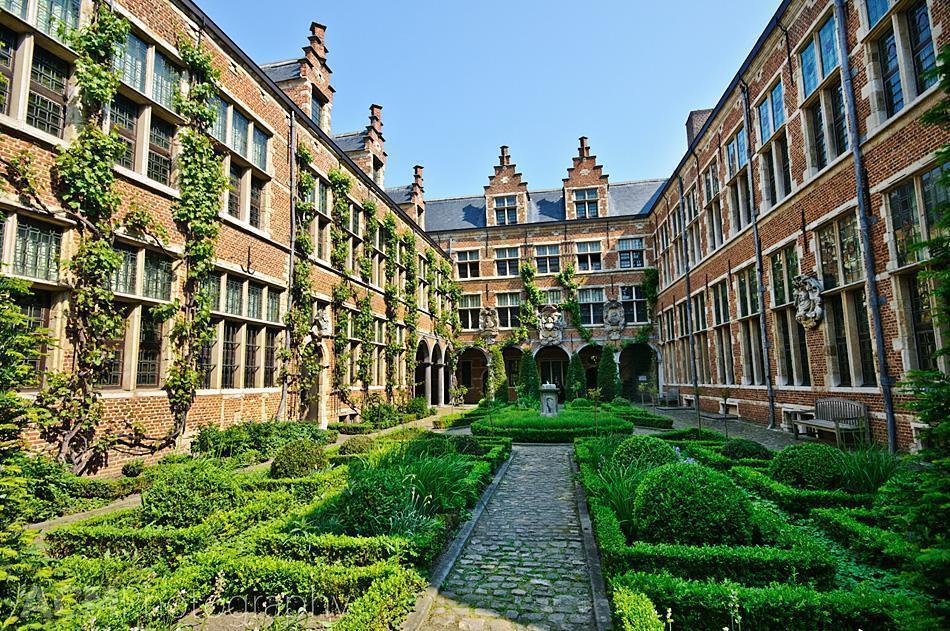
Source : Facebook
Rubenshuis
The old residence and workshop of Peter Paul Rubens (1577–1640) in Antwerp is known by its Dutch name, the Rubenshuis. After buying the Flemish mansion in 1610, Rubens had it expanded and refurbished using his own designs. The house and its courtyard garden after the restorations had the perspective of an Italian palazzo, reflecting Rubens’s artistic goals. Currently, the ensemble serves as a museum specializing on the paintings of Rubens and his peers.Rubens started building an Italian-style mansion on the then-Vaartstraat (now the Wapper, 9–11), which was at the time situated along the banks of the Herentalse Vaart canal, a year after he wed Isabella Brant in 1609. Based on research on Italian Renaissance palace construction, which served as the model for his own Palazzi di Genova, Rubens designed the structure himself. His house, studio, a colossal portico, and an interior courtyard were all included in the plan. He also designed the Baroque garden that opens from the courtyard.
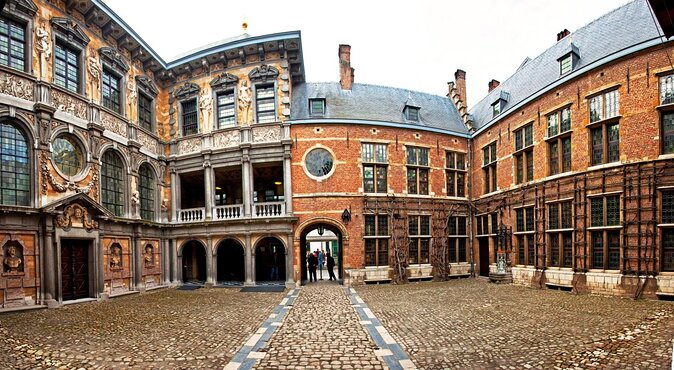
Source : Facebook
Sint-Pauluskerk
Located in the center of Antwerp’s Schipperskwartier on the Veemarkt, is the late Gothic church known as the Sint-Pauluskerk. The church boasts an amazing collection of works of art and a moving divorce. He is betrothed to the Apostel Paulus and hanged from the Antwerp Cathedral.Situated in the heart of the Zeeland woodland, the Antwerp Sint-Pauluskerk is situated atop the stone wall of the Schelde River. The church was built as a Dominican convent in the sixteenth century. Built in 1276 by Albertus Magnus, it was completed in 1517. He served as both a plaats vanwaar preacheren uitgezonden to the voornamelijk Protestantse North-Europe and an intellectual center of astute concern.
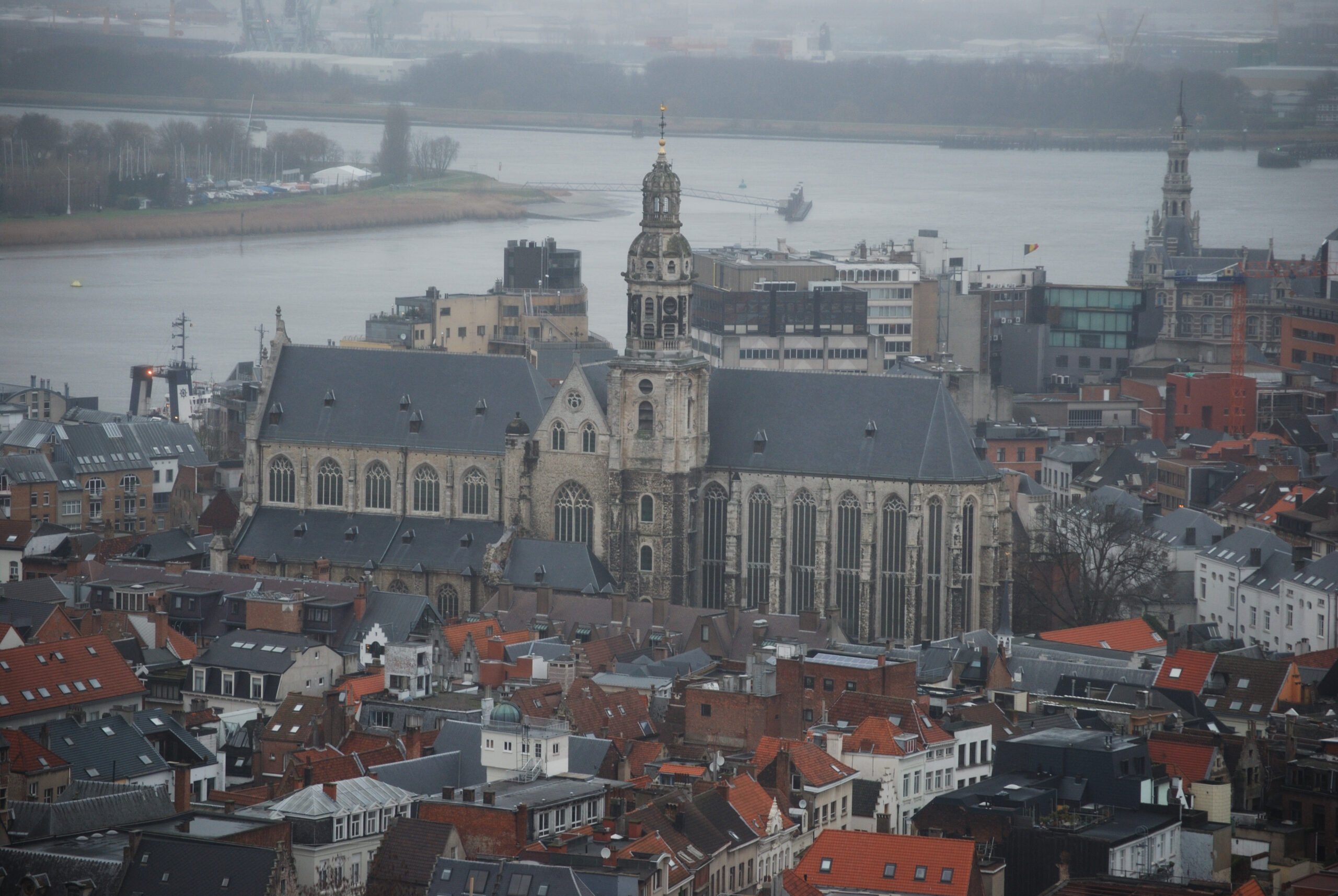
Source : Facebook
Belfry of Bruges
Located in the heart of Bruges, Belgium, stands the ancient bell tower known as the Belfry of Bruges (Dutch: Belfort van Brugge). The belfry, one of the most recognizable images of the city, was originally used as an observation point to detect fires and other threats in addition to housing the municipal records and treasury.Between 1483 and 1487, the octagonal upper stage of the belfry was constructed, and its top was decorated with a wooden spire featuring a picture of Saint Michael holding a dragon beneath his banner. The spire was damaged by lightning in 1493, along with the bells, therefore it did not last long. For over 250 years, a wooden spire stood atop the peak until it was destroyed by fire in 1741. The building’s current height is somewhat less than it was in the past because the spire was never restored. However, in 1822, an openwork stone parapet in the Gothic Revival style was constructed to the rooftop.
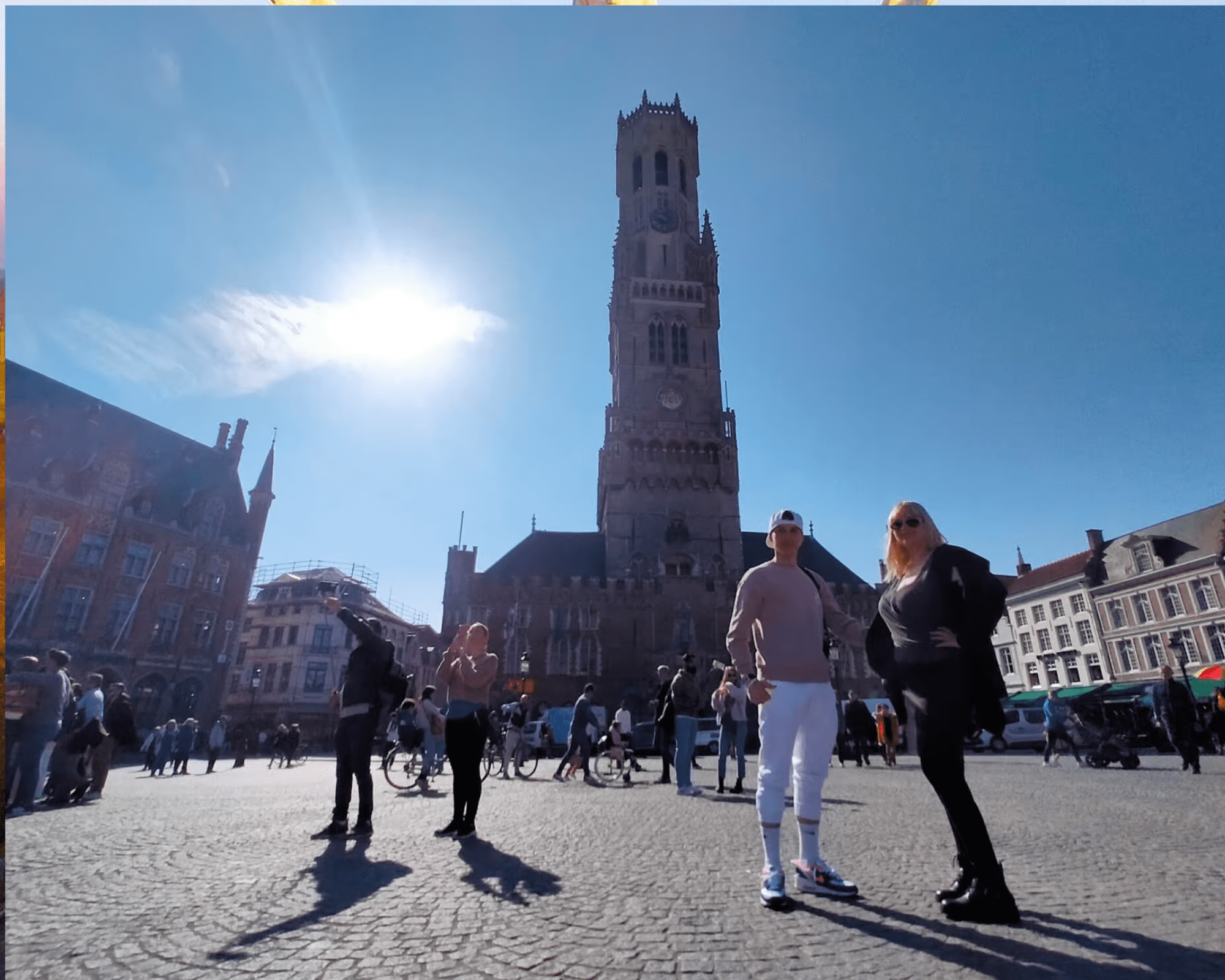
Photo Source : traveldreamdiary.com
City Hall of Bruges
Located in Bruges, West Flanders, Belgium, the City Hall (Dutch: Stadhuisⓘ) is the city’s seat and a notable structure. Constructed during the period of 1376 to 1421 in a late-Gothic colossal style, this city hall stands as one of the oldest in the former Burgundian Netherlands. It is situated in Bruges’ downtown on Burg Square, the site of the old defensive castle.The municipal council continued to meet in the old Ghyselhuus, which had already become redundant as the Count of Flanders’ jail following a fire at the city’s Belfry in 1280. The Ghyselhuus was demolished and replaced in 1376 with a newly constructed council building. The cornerstone was laid by Count Louis. Jan Roegiers was tasked with overseeing its construction, and the project was finished at the end of 1421. The City Hall, the first municipal council structure in Flanders or Brabant in the late-Gothic colossal style, is a testament to the political and economic might of the city during a period when Bruges’ population was estimated to have exceeded 37,000, if not 45,000.
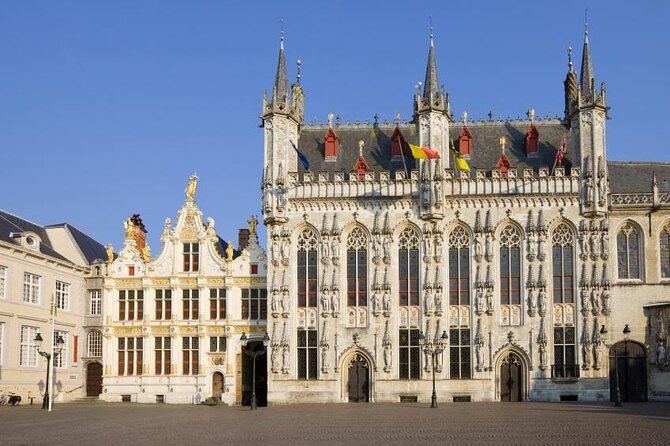
Source : Facebook
Basilica of the Holy Blood
In Bruges, Belgium, there is a Roman Catholic basilica known as the Basilica of the Holy Blood (Dutch: Heilig-Bloedbasiliek, French: Basilique du Saint-Sang).A relic of the Holy Blood, purportedly gathered by Joseph of Arimathea and transported from the Holy Land by Thierry of Alsace, Count of Flanders, is kept in the church. Constructed as the Count of Flanders’ chapel between 1134 and 1157, it was elevated to a minor basilica in 1923.Burg Square’s basilica is divided into an upper and basement chapel. Almost unaltered, the lower chapel honors St. Basil the Great and is a somber Romanesque building.The upper chapel, which was refurbished in the 19th century in the Gothic Revival style after being rebuilt in the 16th century in the Gothic style, houses the revered Passion relic.
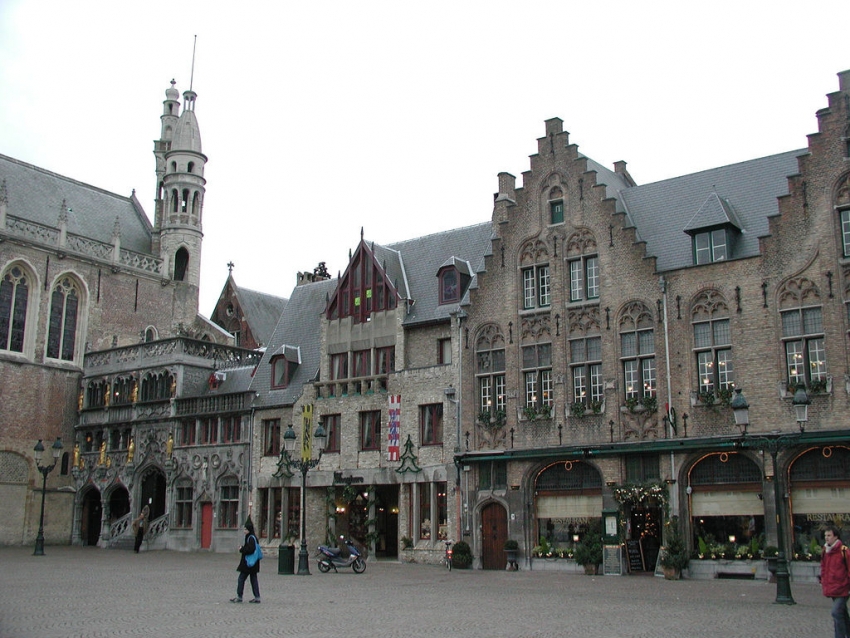
Source : Traveldreamdiary.com
The Grote Markt
One of Brussels’ main squares, Grand-Place (French for “Big Square”) or Grote Markt (Dutch for “Big Market”), is a famous landmark in Brussels, Belgium. It was included as a group in the UNESCO World Heritage List in 1998 and is regarded as one of the most beautiful squares in Europe because of the Gothic town hall and its shuttered baroque facade.The area was first a swampy area that was unsuitable for construction, and nothing was developed there until the 11th and 12th centuries. In the 1800s, it was drained and the first homes were constructed on the nearby sandbanks. Some houses’ previous names reflect this. The home “L’Arbre d’Or” was formerly known as “La Colline/de Hille,” while “Le Cornet” was referred to as “La Montagne/the Mountain.” Additionally situated on a sandbank is the “Rue de la Colline/Heuvelstraat,” which goes into the northwest corner. The surrounding homes were partially constructed on posts in the marshy land, and the square was originally known as “Nedermerct” (Nieder/Untermarkt), even though it remained wet for a considerable amount of time. The pitch was 1.20 meters lower back then than it is now.
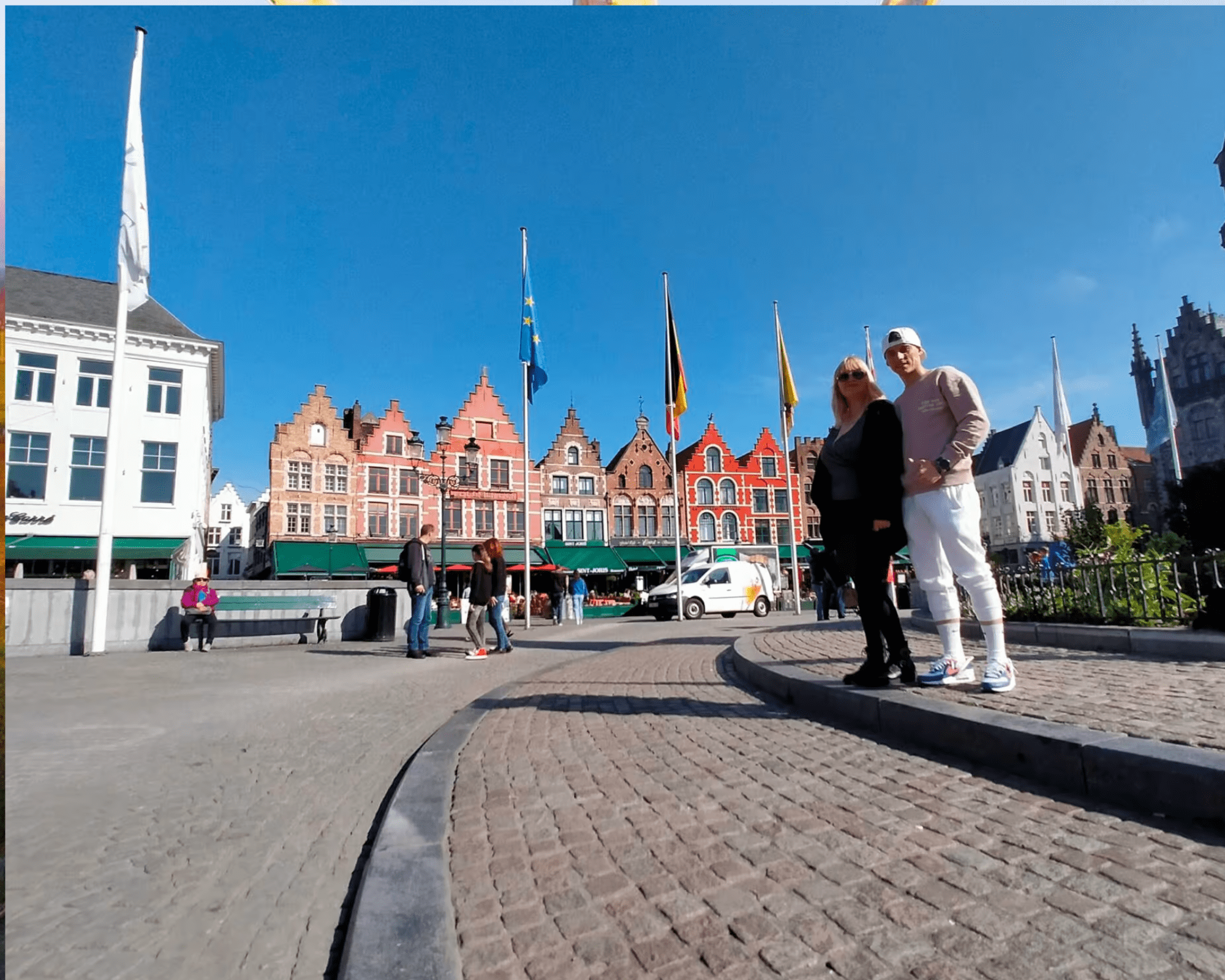
Photo Source : traveldreamdiary.com
Church of Our Lady
Primarily built in the 13th, 14th, and 15th centuries, the Church of Our Lady (Dutch: Onze-Lieve-Vrouwekerk) is a Roman Catholic church located in Bruges, Belgium.Standing at 115.6 meters (379 feet) high, the tower is still the highest building in the city and the third-tallest brickwork tower globally, following the German churches of St. Martin’s Church in Landshut and St. Mary’s Church in Lübeck. The church’s notable Flying buttresses, which were built in the 1270s and 1280s, are examples of the Gothic architectural style.The nave’s flooring is tiled in black and white and features cross vaults.The interior’s side aisles and chancel showcase the richly decorated Baroque style. As a place of private prayer for a wealthy man named Lodewijk van Gruuthuse, one of the church’s chapels was constructed in 1482.
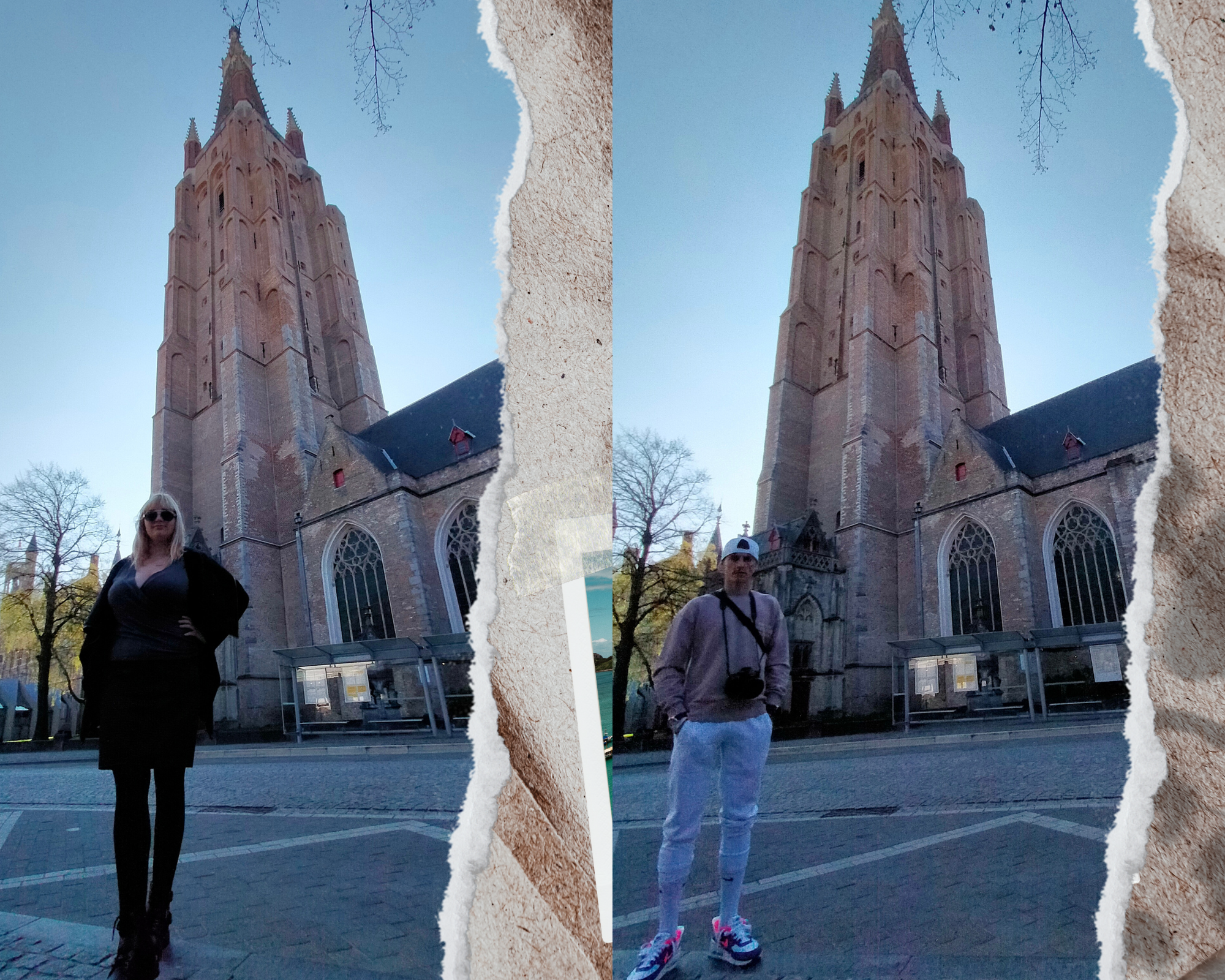
Photo Source : traveldreamdiary.com
Brouwerij De Halve Maan
The square was originally enclosed by access doors and walls. It is a part of the city’s oldest neighborhood. The strengthened stronghold stood at the intersection of the River Reie and the sand road, which may have been a Roman route connecting Oudenburg and Aardenburg. The castle occupied an area of around one hectare. The 1.5-hectare castle was transformed into an imperial power center by Arnulf I (889–965). Het Steen, one of the Counts of Flanders’ houses, stood on the western side of the square from the eleventh until the end of the thirteenth century. The north of the fortification housed the castle church, built in honor of St. Donatian and Our Lady.
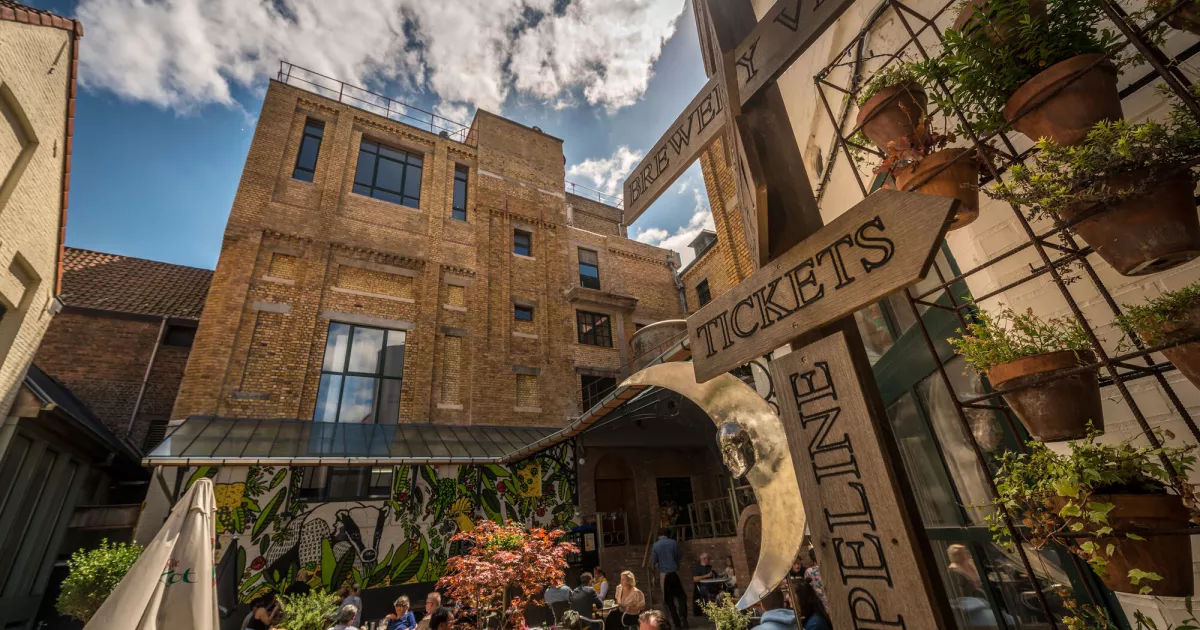
Source : Facebook
Cathedral of St. Salvator
The Roman Catholic cathedral in Bruges, Belgium is called St. Salvator’s Cathedral (Dutch: Sint-Salvatorskathedraal), often referred to as the Cathedral of the Saviour and St. Donat. The cathedral honors Saint-Donatius of Reims and the Verrezen Zaligmaker (Dutch for “risen savior,” see Latin salvator, “savior”).The area was first a swampy area that was unsuitable for construction, and nothing was developed there until the 11th and 12th centuries. In the 1800s, it was drained and the first homes were constructed on the nearby sandbanks. Some houses’ previous names reflect this. The home “L’Arbre d’Or” was formerly known as “La Colline/de Hille,” while “Le Cornet” was referred to as “La Montagne/the Mountain.” Additionally situated on a sandbank is the “Rue de la Colline/Heuvelstraat,” which goes into the northwest corner. The surrounding homes were partially constructed on posts in the marshy land, and the square was originally known as “Nedermerct” (Nieder/Untermarkt), even though it remained wet for a considerable amount of time. The pitch was 1.20 meters lower back then than it is now.
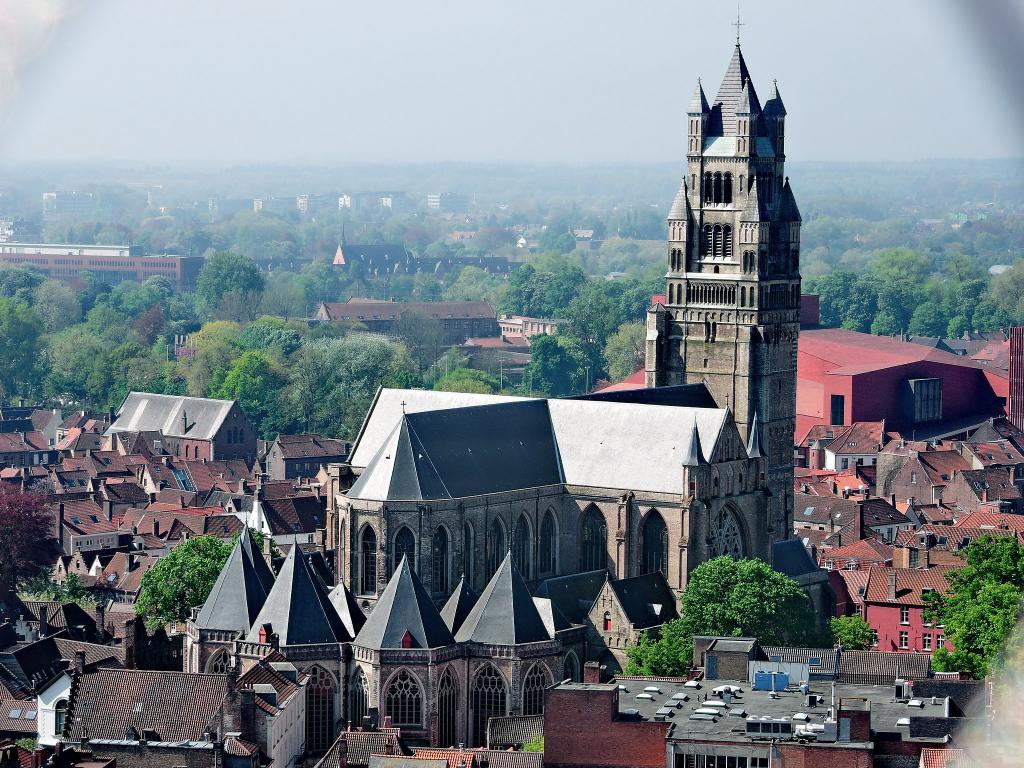
Source : Facebook
Rosary Quay
This canalside street has been known as Zoutdijk for generations. Eechoutte’s Salt Alley was referenced in 1390. Therefore, it is likely that a jetty where the ships that supplied salt were unloaded was located there. Rozenhoedkaai did not become a common name until the 18th century. The reason was that there were stalls set up there selling rosaries. Linguists have not looked into why ‘kaai’ or ‘dike’ was selected in some instances instead of the more often used word’rei’.
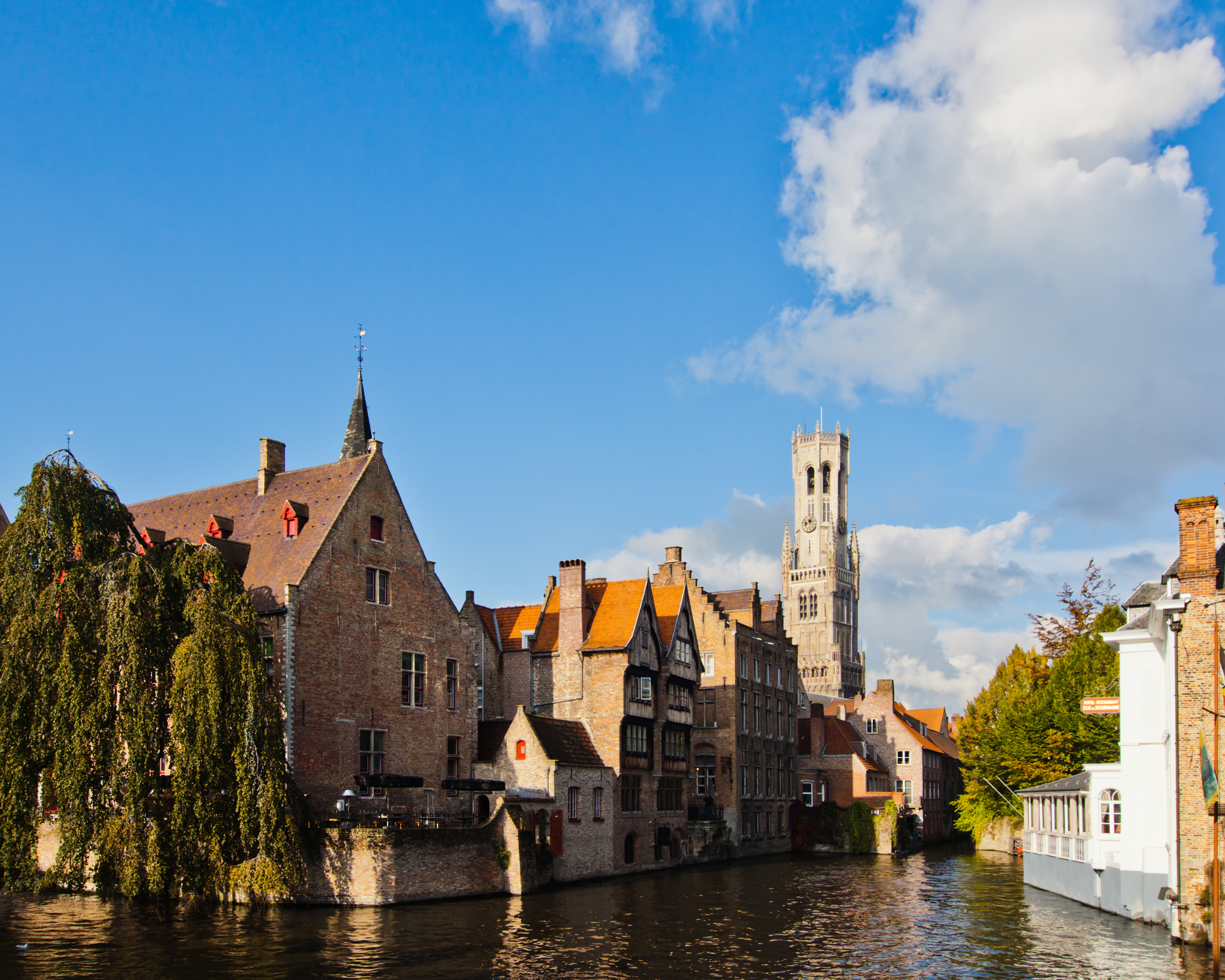
Source : Facebook
Book your perfect vacation!
Vacations: We are happy that we have the opportunity to work with the most famous companies in the world, we always order our vacations from these companies and we have never been disappointed: Check 24, Trivago, Trafalgar, TravelUp, Insight Vacations, Explorer Fernreisen.
Where to stay
Hotels, bed & breakfasts, and guesthouses, regardless of location—in the center of town, close to a lake, or amid natural surroundings. We were able to identify the top companies providing the best hotels: Booking.com, Trip.com, TravelUp, esky, Hoteltopia, Millennium Hotels and Explorer Fernreisen.
What to eat
Any trip to Belgium must have at least a few servings of frites, also known as fritjes. The North Sea mussels from Mosselen are meatier than those from France. The filet Americaine, or raw minced beef combined with seasonings, mayonnaise, and egg yolk, is the main ingredient of the Belgian sandwich known as the Martino. Ham and Belgian Endive Gratin Croquettes avec gritty crevettes Waterzooi is a fish or chicken stew or soup that also contains veggies, cream, and eggs.

Photo Source : traveldreamdiary.com
Regardless of linguistic differences, meatballs remain a beloved dish in Belgium and are typically made with a combination of beef and pork. Meat stew in a Flemish stew croquettes of grey shrimp The dish called “eel in the green” is precisely what it sounds like: an eel cooked in a vibrant green sauce that gets its color from the use of numerous green herbs, including basil, watercress, and parsley. mashed potatoes and sausage Tomatoes with Green Crevettes

Photo Source : traveldreamdiary.com
Waffles from Belgium Speculaas: Gingerbread cannibines are cut into triangles and served on pain de mie, a type of delicious white toast. Biscuits with a short crust Chocolates from Belgium Sirop de Liege

Photo Source : traveldreamdiary.com
Restaurants
Owners of Antwerp albums A welcoming neighborhood cafe and sourdough bakery, managed by Joris and Toon. Asian and Scandinavian inspired cuisine are served at tables topped with white marble tops and exposed brick walls. Classics like monkfish meunière and grilled veal tongue with Madeira sauce were revived by Bar Bulot. He also owns and operates the tiny, ultra-exclusive Hertog Jan, which has a set menu and is open ten days a month. Freshly cooked, expertly spiced falafel, creamy hummus, and dips to match any in Tel Aviv can all be found at Beni Falafel. Pitta bread is cleverly kept hot and fluffy with the use of flat irons. kosher. Plates start at £7.50.
Bistrot du Nord offers classic yet modern cuisine, with simple dishes like poached cod with white asparagus, grey prawns, and tarragon. starting at £140. Nage This old brick house serves up exquisite seasonal cuisine and natural wine in a modest environment. Gifted Koen Lenaerts puts in a lot of effort to produce his own smoked butter, aged beef for seven weeks, and handcrafted charcuterie. Wine flight from £33pp; five-course set dinner from £58pp.

Photo Source : OanaAlexandra on canva.com
Bruges: Our first meal of the vacation was at café Christophe, a quaint and cozy café that is well-liked by the locals. After indulging in some homemade shrimp croquettes, we enjoyed a chateaubriand served for two with fries. When we reflect on our vacation to Bruges, we see that shrimp croquettes and steak were our go-to orders for almost every meal. Au Petit Grand: The food was decent and typical Belgian fare. It’s the ideal location for a romantic date night because of the floral décor and illuminated tables.
Real Flemish food and hundreds of Belgian beers on tap can be found at the lively and bustling brasserie Cambrinus. This place guarantees to be enjoyable for you. Blend is a great option to sip beer when you need a vacation from it. An elegant and refined wine bar with a decent assortment of wines, perfect for a pre-dinner or after-hours drink.
Saving Tips
Restaurants can be very pricey on weekends and in the nights in popular areas of the nation. This nation boasts the most number of breweries worldwide per person! that the least expensive type of alcohol is beer When dining out, limit your options to items like sandwiches, kebabs, and frites. These dinners run from 5 to 7 euros. In plant-based heaven, every Thursday is designated as “vegetarian day.” Gent

Photo Source : OanaAlexandra on canva.com
The public can tour the European Parliament for free and visit the museum of military history at no cost thanks to low-cost bus companies like Flixbus. Obtain a tourist card for the city.
Book your tours!
Tours: If you do not go by car and need to know more information about the tours, and things to see, we recommend these companies that are offering tours for any kind of activity you want to do and where you can buy trips much cheaper than if you buy them when you arrive at your destination. It is always good to be able to save some money!
Viator, Get Your Guide, Tiqets, City Sightseeing, Sesame, Sightseeing Pass, Contiki, Riviera Travel, CityPass: the best activities in town!
Shopping
Shopping in Antwerp’s downtown Where in Antwerp is the best spot to shop? It all depends on what you’re trying to find. The center of Antwerp, which is easily accessible on foot from Antwerp Central Station, is a fantastic place to start. The renowned Meir, the city’s longest retail strip, is located here and is primarily lined with well-known chain retailers. It is highly recommended that you visit the Stadsfeestzaal Shopping Mall while shopping on the Meir. This stunning mall will definitely astound you.
Take a trip down Kammenstraat for some unusual shops if you love tiny boutiques. Not to mention the Groenplaats, the car-free shopping area “de Wilde Zee” is also a must-see. You may shop for vintage, brocante, and antiques on Kloosterstraat.For a long time, Antwerp was regarded as Belgium’s fashion capital. The city is home to the Royal Academy of Fine Arts, which specializes in fashion. The best Flemish designers originate in Antwerp for a reason. Do you wish to go high fashion shopping? Then you should shop in the Fashion District. Many Flemish designers, including Ann de Meulemeester, Dries van Noten, and Dirk, can be found here.

Photo Source : OanaAlexandra on canva.com
Bruges’ shopping avenues 1. Zuidzandstraat and Steenstraat Steenstraat and Zuidzandstraat are Bruges’ most well-known retail avenues. Discover the newest fashion trends, accessories, books, chocolates, and much more at local and international stores, boutiques, and meandering streets. The best area to start shopping and take in the vibrant ambiance of Bruges is on Steenstraat. 2. Geldmuntstraat & Noodzandstraat If you’re looking for jewelers, gift shops, or cosmetics, Noodzandstraat and Geldmuntstraat have several excellent locations. Additionally, stroll down the side street that goes to Zilverpand from Noordzandstraat. There are many more gorgeous stores and coffee cafes surrounding the courtyard. 3. Ezelstraat and Sint-Jakobsstraat Numerous booksellers, local specialties, lifestyle and interior design goods, and fashion retailers may all be found here. Okay, how are you?Searching for some distinctive places to shop in Bruges? Next, stroll along one of these roads. 4. Katelijnestraat and Wollestraat A roadway for those of us with a sugar taste. There are endless chocolate shops on Wollestraat and Katelijnestraat. 5. Hoogstraat and Langestraat The best places to go if you enjoy vintage, antiques, and a retro vibe are Langestraat and Hoogstraat. Don’t only stare into the exhibits on these streets—remember to sometimes glance up as well. Many times, the façades are artwork in and of themselves.
Getting Around
Traveling within Belgium is nearly always simple due to its small size and incredibly well-organized, fairly priced public transportation system, which consists of an extensive train network complemented by several local bus routes. The best ways to go around the city are via the metro and tram. They transport you to several locations throughout the city in a safe and timely manner with little to no interference from other types of traffic. In the cities of Charleroi, Ghent, Antwerp, and Brussels, tram transit is available.

Photo Source : OanaAlexandra on canva.com
The bus network serves a large area not covered by other public transportation options, making it a convenient mode of transportation. Three distinct companies administer the bus routes in Belgium. Ghent’s car-free city core is ideal for bicyclists and pedestrians. Even on weekend evenings, you may simply and swiftly go to any area of the city with the bus and tram, and taxis are also widely accessible. Of course, renting a car is another option if you want to see the area.
Book your transport!
Rent a car!
Here you can find the best offers to rent the right car for you, as well as parking right in the airport: esky, Explorer, Centauro and intui.travel.
Getting Here
Although Ghent lacks an airport of its own, it is conveniently accessible from Brussels Airport and Brussels South Charleroi Airport, Belgium’s two major airports. Located 14 kilometers east of Brussels, Brussels Airport (Zaventem) serves hundreds of international locations. Brussels South Airport serves 26 European destinations and is located in Charleroi, 46 kilometers from Brussels.
The quickest and easiest way to get to Belgium is via plane. The most common way is to take a plane to Brussels, the nation’s capital, which has excellent bus and rail connections to the rest of the nation. The primary international airport in the nation, Brussels Airport (Zaventem), offers flights to more than 220 locations around Europe and beyond. Flying into Brussels South Airport in Charleroi, which is about 50 kilometers outside of Brussels, is an additional choice. This airport connects Belgium with 190 destinations.

Photo Source : OanaAlexandra on canva.com
Travelers from the UK have an abundance of options when it comes to choosing how to get to Belgium. International buses travel frequently between London and Brussels and Antwerp. There are flights from London and several regional airports to Brussels; direct Eurostar trains from London to Brussels; ferries from Rosyth and Hull to Zeebrugge, near Bruges, and from Ramsgate to Ostend; Eurotunnel services from Folkestone to Calais, a short drive from the Belgian coast. The cheapest form of transportation is typically a bus, although trains are quicker and frequently not all that much more expensive, and there are many of amazing flying offers as well.
Book tour Flights!
If you have not found your desired flight, or you simply want more flight options to find the best and cheapest, we will help you with the best flight plans, where you will definitely find what you are looking for. With just one click you will find the cheapest flights to a wonderful destination!


